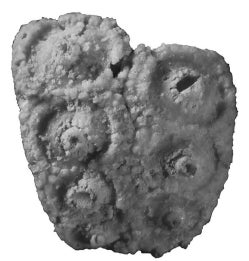Newly Discovered Fossil Sea Urchin is the Oldest of its Kind
 Contact: Robert Perkins at (213) 740-9226 or perkinsr@usc.edu
Contact: Robert Perkins at (213) 740-9226 or perkinsr@usc.edu
Researchers have uncovered a fossil sea urchin that pushes back a fork in its family tree by 10 million years, according to a new study.
A team from USC found the Eotiaris guadalupensis in the collections of the Smithsonian Institution from the Glass Mountains of west Texas, where it had been buried in a rock formation that dates back to 268.8 million years at its youngest.
“This fossil pushes the evolution of this type of sea urchin from the Wuchiapingian age all the way back to the Roadian age,” said David Bottjer, professor at the USC Dornsife College of Letters, Arts and Sciences, and senior author of a paper announcing the find that appeared in Nature Scientific Reports on October 21.
This paper was a collaboration between Bottjer’s lab and Eric Davidson’s lab at Caltech. Jeffrey Thompson, a Ph.D. student at USC and was the lead author of the study, found the fossils of Eotiaris guadalupensis in the Smithsonian collections.
Eotiaris guadalupensis is a cidaroid, one of the two main types of sea urchins found in today’s oceans. The other group, the euechinoids, evolved wildly varying body types and accounts for almost all sea urchins alive today. Cidaroids, by contrast, look pretty much the same as they did millions of years ago. Both evolved from an ancestral group of echinoids known as the Archaeocidaridae, which are now extinct.
The divergence of the two groups marks a major — and relatively abrupt — shift in the genetic organization of sea urchins.
“It’s not just the color of a moth’s wing changing,” said Bottjer, referring to the classic example of the peppered moth in England that, in the post-Industrial Revolution’s sooty skies, began to appear in a darker color. “We’re looking at tightly intertwined networks of genes that change together to cause major morphological differences.”
Pinning down the time at which the two groups diverged allows evolutionary biologists to better understand the processes that occur during major evolutionary changes.
Bottjer and Thompson will also expand on these findings at the Geological Society of America meeting in Baltimore on November 3 and 4, when they will discuss in separate presentations the burgeoning field of paleogenomics — tracking morphological innovations from the fossil record which are produced by know genes in modern organisms, to date when these genes first evolved.
This research was funded by the National Science Foundation (Grant IOS1240626).
The paper can be found online here: http://www.nature.com/articles/srep15541
Photo: Eotiaris guadalupensis fossil discovered by Jeffrey Thompson in the Smithsonian collections. (Image courtesy of David Bottjer)
###



